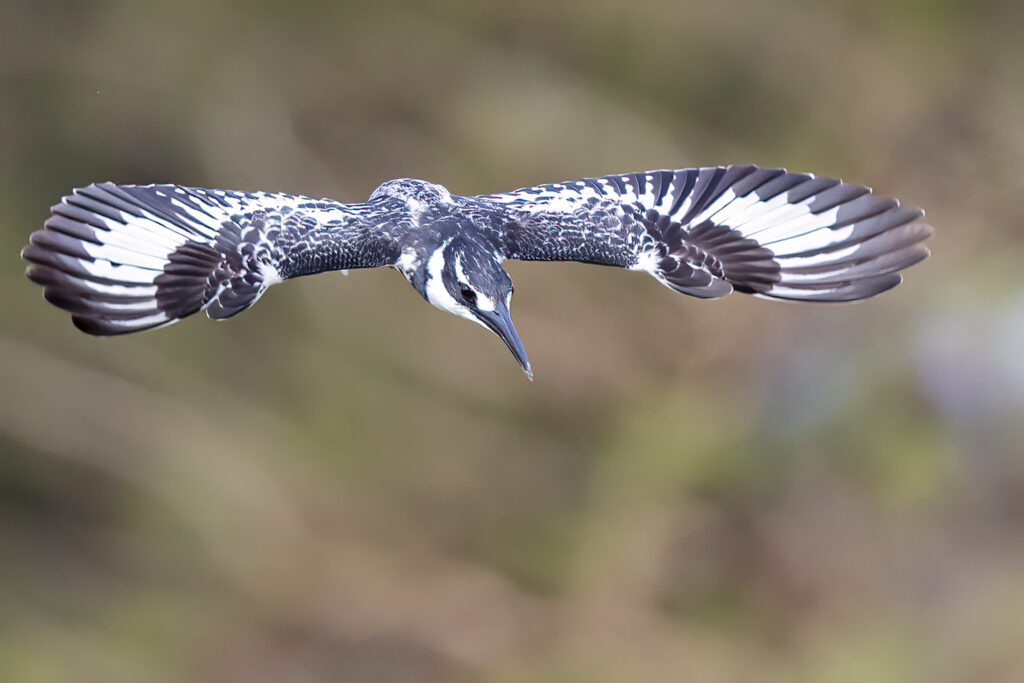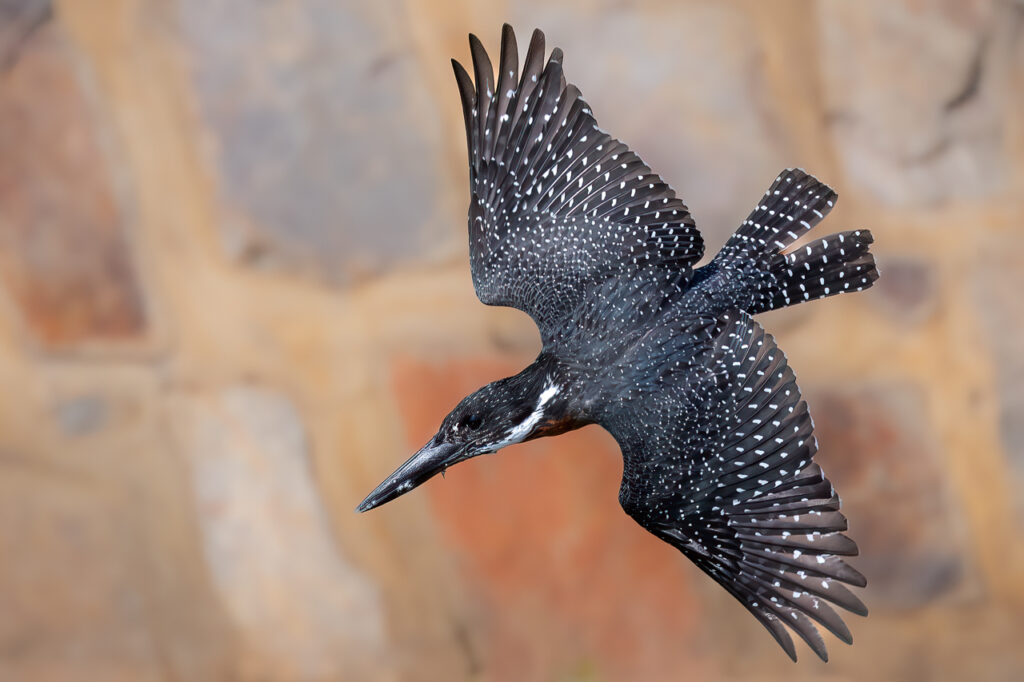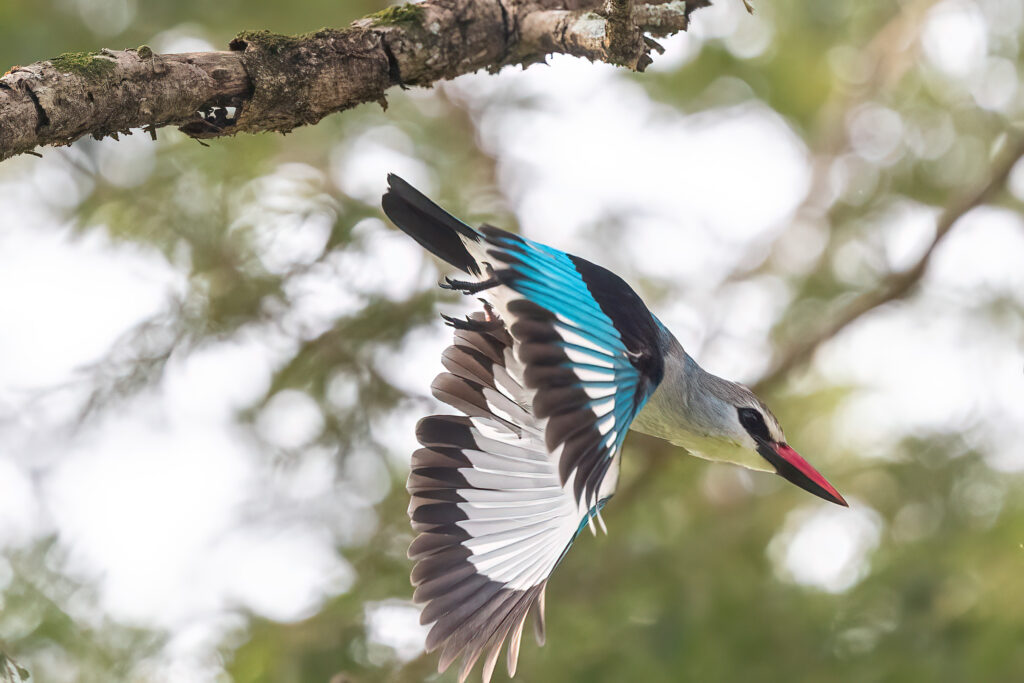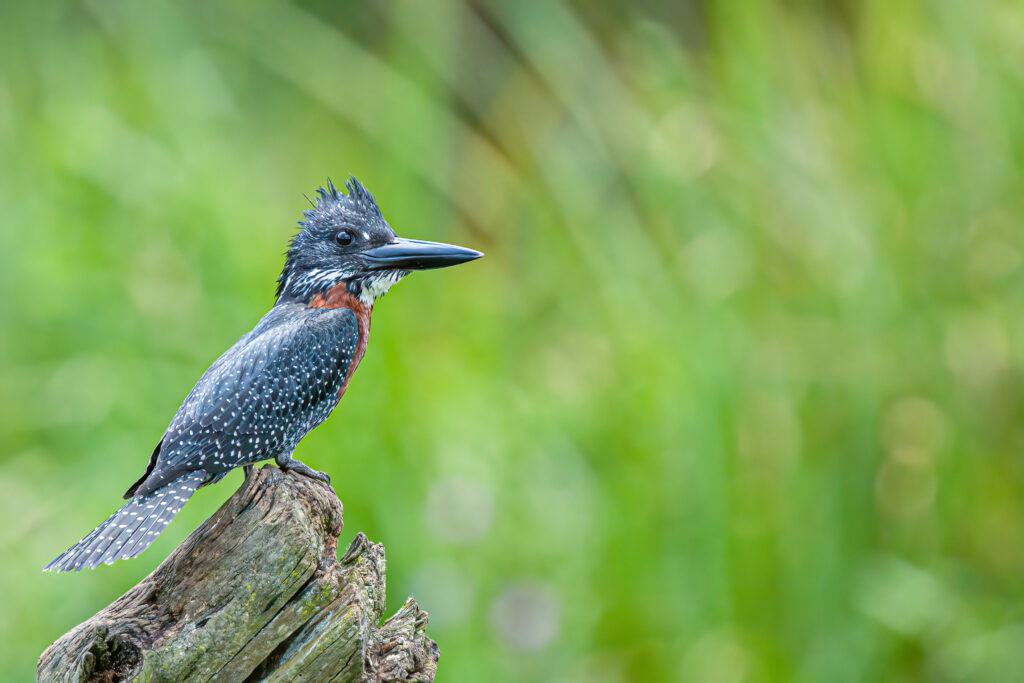If you had asked me a couple of years to visualise a kingfisher, my mind would have conjured up an image of beautiful little bird with a long beak perched next to water. However, I now know this image fails to appreciate the diverse range of birds that make up the kingfisher family. Of the eleven different species of kingfisher recorded in Rwanda, I regularly see five. Resident populations of each of these five can, if lucky be found in Kigali throughout the year. These five provide us with a great snapshot of the diverse range of birds that make up Rwanda’s kingfisher family. Their diversity spans size, patterns and colouration, breeding strategies and also diet – not all kingfishers prefer to eat fish!

The Giant Kingfisher is the biggest of the five (and all the kingfishers in Africa) measuring between nearly 50cm in length, whilst the African Pygmy Kingfisher is the smallest at just 11cm! The saying, ‘Great things come in small packages’ is definitely true when it comes to the African Pygmy Kingfisher. This beautifully tiny bird is packed with colour, ranging from purples and blues through to lilac and orange. The slightly larger yet still ‘gem-like’ Malachite Kingfisher is also beautifully coloured with an intricately coloured crown but lacks the lilac wash on its cheeks. The red and black beak of the Woodland Kingfisher contrasts really well with the turquoise upper parts and wings. In contrast, the Pied Kingfisher’s black and white plumage highlights so well how a bird doesn’t need to be brightly coloured to look amazing! This is further amplified when a Giant Kingfisher open its wings, the tops of the wings are black with small white spots speckled across the top of the whole bird’s body and tail!

Kingfishers are mostly monogamous and solitary breeders with couples often forming long term pair bonds. The Woodland Kingfisher nests in tree cavities. They normally a hole previously excavated by a barbet or woodpecker. Once a nest site is found, the pair will often reuse it again and again. The other four species dig their nest burrows into sandbanks using their beaks to dig and feet to remove the unwanted debris. Kingfishers are highly territorial and outside the breeding season are more often than not solitary birds. The exception is the Pied Kingfisher. A breeding pair will often be supported by helpers. These ‘helpers’ are usually the previous seasons’ offspring which will help find food for the young and also assist with territorial defence.

Kingfishers can be placed in two groups, aquatic and non-aquatic. The Giant, Malachite and Pied Kingfishers are aquatic, meaning their diet is predominantly fish and other aquatic prey items. These three are often seen perched near or over water, once a prey item is spotted they will dive in to retrieve it before returning to a perch to stun and consume it. I have spent many hours waist deep in water waiting to photograph a kingfisher diving into the water. The Pied Kingfisher is the largest bird that can hover using wing power alone. By hovering above water, they are able to expand their hunting area away from just the edges.

The Woodland and African Pygmy Kingfishers are non-aquatic and their diets consists largely of insects, small amphibians, and other aquatic invertebrates. Consequently, these two species are rarely found near water but rather in wooded areas. Whereas the Woodland Kingfisher prefers lightly wooded areas, the African Pygmy Kingfishers prefers denser wooded areas. Like the aquatic kingfishers, the Woodland and African Pygmy Kingfishers will perch on tree branches to locate prey, but will take prey on the wing, from the ground and even from the surface of water.

I have observed and photographed all five kingfishers in Kigali’s wetlands and the wooded area that surrounds them. Both Umusambi Village and Nyandungu Eco-Park are great places to immerse yourself in nature and watch these beautiful birds in action.


What a brilliant and careful study!
So many details, we learn a lot about Kingfishers in Rwanda.
Bravo and thank you, Will!
Glad you enjoyed it and found it informative Nikky.
Best, Will